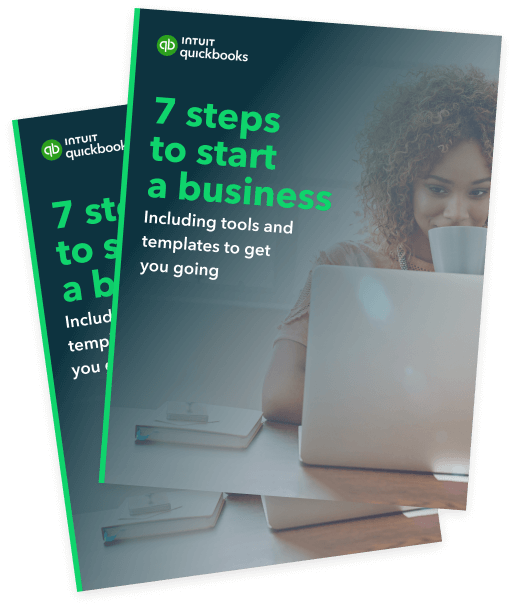Running a business requires a lot of math. But to calculate your profits and expenses properly, you need to understand how money flows through your business. If your business has an inventory, it’s integral to understand the cost of goods sold.

Cost of goods sold: How to calculate and record COGS
What is the cost of goods sold?
The cost of goods sold (COGS) refers to the cost of producing an item or service sold by a company.
Knowing the COGS can help you calculate your business’s profits. The COGS can also inform a proper price point for an item or service.
Understanding this term can help you better manage your inventory, taxes, and business.
Is the cost of goods sold the same as the cost of sales?
Yes, the COGS and cost of sales refer to the same calculation. Both determine how much a company spent to produce their sold goods or services.
What is included in the cost of goods sold?
The COGS may include:
- Materials used to create a product or perform a service.
- Labour needed to make a product or perform a service.
- Overhead costs directly related to production (for example, the cost of electricity to run an assembly line).
The cost of goods sold excludes:
- Indirect expenses (for example, distribution or marketing).
- Overhead costs associated with general business operations.
- The cost of creating unsold inventory or services.
The cost of goods sold formula
Considering what’s included and what’s excluded, you can determine the COGS with the following equation:
(Cost of inventory at the beginning of the reporting period)
+
(Other inventory purchased for sale during the reporting period)
–
(Cost of inventory remaining at the end of the reporting period)
=
Cost of goods sold
How to calculate the cost of goods sold
Calculate the COGS by adding the cost of inventory at the beginning of the year to purchases made throughout the year. Then, subtract the cost of inventory remaining at the end of the year. The final number will be the yearly COGS for your business.
Typically, calculating the COGS helps you determine how much you owe in taxes at the end of the reporting period—usually 12 months. By subtracting the annual COGS from your annual revenue, you can determine your annual profits. The COGS can also help you determine the value of your inventory for calculating business assets.
There are other inventory costing factors that may influence your overall COGS. The Australian Taxation Office (ATO) refers to these methods as “first in, first out” (FIFO), “last in, first out” (LIFO), and average cost.
Cost of Goods Sold Calculator
Calculating the cost of goods sold can become a lengthy and tedious process. But the process becomes so much simpler when using an online calculator. Use QuickBooks' Cost of Goods Sold Calculator to calculate the direct costs related to the production of the goods sold in a company.
To get the value of COGS from the calculator, you must enter three details:
- Beginning inventory for the necessary accounting period. Use QuickBooks' Beginning Inventory Calculator to get this value
- Purchases made in the previous accounting period
- Ending inventory value at the end of the previous accounting period
Based on the above inputs, the calculator will give you the value of COGS. The QuickBooks COGS calculator is an ideal way to make calculations with minimal effort.
The calculator is easy to use and saves you the time and trouble of doing manual calculations.
Inventory costing methods
The ATO requires businesses that produce, purchase or sell merchandise for income to calculate the cost of their inventory. Depending on the business’s size, type of business licence and inventory valuation, the ATO may require a specific inventory costing method. However, once a business chooses a costing method, it should remain consistent with that method year over year. Consistency helps businesses stay compliant with generally accepted accounting principles (GAAP).
If an item has an easily identifiable cost, the business may use the average costing method. However, some items’ cost may not be easily identified or may be too closely intermingled, such as when making bulk batches of items. In these cases, the ATO recommends either FIFO or LIFO costing methods.
First in, first out (FIFO)
The first in, first out (FIFO) costing method assumes two things:
- The items purchased or produced first were also the first items sold.
- The inventory items at the end of your reporting period are matched with the costs of related items recently purchased or produced.
The price of items often fluctuates over time due to market value or availability. Inflation causes prices to increase over time. Deflation causes prices to decrease over time. Depending on how those prices impact a business, the business may choose an inventory costing method that best fits its needs.
During inflation, the FIFO method assumes a business’s least expensive products sell first. As prices increase, the business’s net income may increase as well. This process may result in a lower cost of goods sold compared to the LIFO method. However, during price deflation, the opposite may occur.
For example, a jeweller makes 10 gold rings in a month. When production started, it cost $100 to make gold rings. Due to inflation, the cost to make the rings increased before production ended. By the end of production, the gold rings cost $150 to make. Using FIFO, the jeweller would list the COGS as $100, regardless of the price it cost at the end of the production cycle. Once those 10 rings are sold, the cost is reset as another round of production begins.
Last in, first out (LIFO)
The last in, first out (LIFO) costing method assumes two things:
- The items purchased or produced last are the first items sold.
- Closing inventory items are considered to be part of the opening inventory from the same year. Items are assumed to have been sold in order of acquisition. That includes items in your inventory at the start of your year and those acquired during the year.
The LIFO method will have the opposite effect as FIFO during times of inflation. Items made last cost more than the first items made because inflation causes prices to increase over time. The LIFO method assumes higher cost items (items made last) sell first. Thus, the business’s COGS will be higher because the products cost more to make. LIFO also assumes a lower profit margin on sold items and a lower net income for inventory. During times of deflation, the opposite may occur.
Let’s say the same jeweller makes 10 gold rings in a month and estimates the cost of goods sold using LIFO. The cost at the beginning of production was $100, but inflation caused the price to increase over the next month. By the end of production, the cost to make the gold rings is now $150. Using LIFO, the jeweller would list the COGS as $150, regardless of the price at the beginning of production. Using this method, the jeweller would report deflated net income costs and a lower ending balance in the inventory.
Average cost method
To determine the average cost of an item, use the following formula:
(Total cost of goods purchased or produced in a reporting period)
———————————
(Total number of items purchased or produced in a reporting period)
In other words, divide the total cost of goods purchased in a year by the total number of items purchased in the same year.
The average cost method, or weighted-average method, does not take into consideration price inflation or deflation. Instead, the average price of stocked items, regardless of purchase date, is used to value sold items. Items are then less likely to be influenced by price surges or extreme costs. The average cost method stabilises the item’s cost from the year.
Here’s what this method looks like, using the same jeweller example: 10 gold rings cost $100 to make at the beginning of production. By the end of production, the rings cost $150 to make due to price inflation. Let’s assume five rings were made at $100, and five were made at $150. Once all the rings are sold, the jeweller can calculate the average cost. Divide $1,250 (the total cost to make all the rings) by 10 (the total rings sold). The jeweller would report the COGS as $125.
Examples of the cost of goods sold
When calculating the COGS, the first step is to determine the beginning cost of inventory and the ending cost of inventory for your reporting period. Here’s an example.
Twitty’s Books began its 2020 fiscal year with $330,000 in sellable inventory. By the end of financial year, Twitty’s Books had $440,000 in sellable inventory. Throughout 2019-20, the business purchased $950,000 in inventory.
Let’s assume the bookshop is using the average costing method when determining their inventory’s starting and ending cost. Here’s what calculating the COGS looks like:
($330,000) + ($950,000) – ($440,000) = $840,000 cost of goods sold
Twitty’s Books would then notate this amount on its 2020 income statement.
Cost of goods sold in a service business
Some service companies may record the cost of goods sold as related to their services. But other service companies—sometimes known as pure service companies—will not record the COGS at all. The difference is some service companies do not have any goods to sell, nor do they have inventory.
Examples of service companies that do have inventory:
- Construction
- Plumbing and electrical
- Repair and installation
- Mining and manufacturing
- Transportation and lodging
For example, a plumber offers plumbing services but may also have inventory on hand to sell, such as spare parts or pipes. To calculate the COGS, the plumber has to combine both the cost of labour and the cost of each part involved in the service.
Or picture a bed and breakfast. Its primary service doesn’t require the sale of goods, but the business might still sell merchandise, such as snacks, toiletries or souvenirs.
Examples of pure service companies that do not have inventory:
- Accounting firms
- Law offices
- Doctors
- Dancers
- Real estate appraisers or firms
- Business consultants
Cost of goods sold on an income statement
You should record the COGS as a business expense on your income statement. Under the COGS, record any sold inventory. On most income statements, the COGS appears beneath sales revenue and before gross profits. You can determine net income by subtracting expenses (including the COGS) from the revenue.
However, some companies with inventory may use a multistep income statement. The COGS appears in the same place, but net income is computed differently. For multistep income statements, subtract the COGS from sales. The result is gross profits. You can then deduct other expenses from gross profits to determine your company’s net income.
Is the cost of goods sold an expense?
Yes, you should record the cost of goods sold as an expense. The COGS is considered a cost of running the business. To create inventory, you have to spend money. That may include the cost of raw materials, cost of time and labour, and the cost of running equipment. Selling the item creates a profit, but a portion of that profit was lost due to the cost of making the item.
Typically, the COGS can be used to determine a business’s bottom line or gross profits. If the cost of goods sold is high, net income may be low. During tax time, a high COGS would show increased expenses for a business resulting in lower income taxes.
Journal example of how to record the cost of goods sold
You should record the COGS as a debit in your accounting journal. You then credit your inventory account with the same amount.
For example, a local spa makes handmade chapstick. One batch yields about 500 chapsticks. It costs $2 to make one chapstick. To determine the cost of goods sold, multiply $2 by 500. The spa’s total cost of goods sold for a batch is $1,000. Recorded in their journal, the entry might look like this:

The above example shows how the COGS might appear in a physical accounting journal. The entry may look different in a digital accounting journal.
No matter how the COGS is recorded, keep regular records on your COGS calculations. Like most business expenses, records can help you prove your calculations are accurate in case of an audit. Plus, your accountant will appreciate detailed records come tax time.
In accounting, debit and credit accounts should always balance out. The example above shows the COGS listed as a positive expense. Inventory is listed as a negative credit. Inventory decreases because, as the product sells, it will take away from your inventory account.
The value of the COGS for your business
Calculating and tracking the COGS throughout the year can help you determine your net income, expenses and inventory. And when tax season rolls around, having accurate records of the COGS can help you and your accountant file your taxes properly. Determining the COGS is only one portion of your business’s operations. But understanding the COGS can help you better understand your business’s financial health.
Related Articles
Looking for something else?

TAKE A NO-COMMITMENT TEST DRIVE
Your free 30-day trial awaits
Our customers save an average of 9 hours per week with QuickBooks invoicing*
By entering your email, you are agree to our Terms and acknowledge our Privacy Statement.















